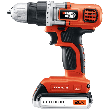One of the more confusing, and fairly important, aspects of home construction, and thus remodeling, is the matter of vapor barriers. A vast majority of homeowners don't know what these are, and it is also a sad fact that many in the construction field don't either. However, by simply forgetting to install some of these when you are doing a major remodel, you are creating an environment that could lead to some potentially dangerous situations later on in life, like mold or structural damage. But what are vapor barriers? The answer is really rather simple, as you will soon see.
Vapor barriers exist for one reason and one reason only, which is to help retard, resist, or even prevent the spread of moisture through the different enclosures of your home. By having these barriers installed properly, you help prevent moisture from getting into the dark spaces of your home, which can go a very, very long way to preventing mold from getting a foothold in your home and thus becoming a health hazard. These have become so important that the United States government has mandated that they be included in the building codes of most municipalities within its borders.
When they are installed properly, vapor barriers can (and should) be found between the walls, ceilings, and floors of your home. Simply put, anywhere that there could be a risk of exposure of moisture to the inside of your walls, ceilings, and floors, these are supposed to be.
Strictly speaking, vapor barriers are actually more of a vapor retarder than an actual barrier. The reason for this is that the ones that are typically used within the building are supposed to be somewhat permeable so that once water vapor has gotten in, it can get back out and allow the area to dry. Here are the technical classifications of the various vapor barriers, and some of the materials used for that type, according to the United States building codes.

MAX Power! A powerful lithium-ion drill/driver that delivers 0-to-650 RPM and 115 inches-per-pound of torque in a lightweight, easy-to-use package. An anti-slip soft grip and LED worklight makes this tool a delight to use. Check out Black & Decker 20-Volt Cordless Drill/Driver today!
If you live in a home or apartment that has brick walls, you know just how easy it is for them to get damaged in some ...
Discover MoreIf your home is particularly damp, you may wish to reduce the dampness for health reasons or for comfort. There are a ...
Discover MoreA home inspector is one of the best ways to find out what the general condition of your home is. The question is, do you ...
Discover MoreThere are currently no comments for this tip. (Be the first to leave your comment—just use the simple form above!)
Copyright © 2026 Sharon Parq Associates, Inc.
Comments